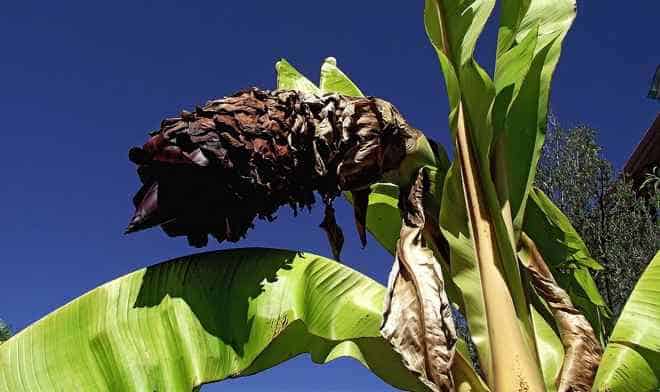The U.N. General Assembly declared 2013 the International Year of Water Cooperation. And the theme of this year’s World Water Week, September 1st-September 7th, is “Water Cooperation: Building Partnerships.” 768 million people do not have access to clean water, and two and a half billion people do not have access to adequate sanitation facilities. Meanwhile, U.N. Water estimates that the food sector contributes 40 percent of organic water pollutants in industrialized countries, and 54 percent in developing countries. During World Water Week, Food Tank will highlight research and innovations that are working around the world to conserve water resources and make clean water available to everyone. Research institutions, private businesses, governments, and the donor community can work together to scale these innovations up and alleviate global water scarcity.
Due to its resilience, nutritional value, and versatility, Ethiopians have been relying on enset as a staple crop for thousands of years. In addition to these characteristics, however, enset has proven to be a valuable asset for food security in times of drought.
The molecular structure of the plant gives it the ability to hold in moisture for extended periods of time. The plant has been known to not only survive drought, but provide water to plants growing next to it. Because of its unique ability to lock in moisture, it lends itself to become globally recognized as an environmentally sustainable agricultural system. Not only do the leaves help shade the soil beneath it, conserving water, but the plant also has the ability to prevent the soil from erosion during heavy rainfall.
According to a study by the American Association for the Advancement of Science (AAAS) titled The Tree Against Hunger: Enset-Based Agricultural Systems in Ethiopia, enset can withstand periodic drought well, and it is believed that if the plant is healthy and at full maturity, it can withstand years of drought. This is due in part to the plant’s anatomy, according to The Permaculture Research Institute:
“The…bulk of this huge plant is composed mostly of air, then water and then fibre. If you split its leaves up, you will find it [sic] is full of cells, which are full of air and water. It is able to hold onto this water for years. If there is a drought it simply stops growing and sits tight till [sic] the rain comes back. In fact it is said to survive up to seven years without rain. You won’t get that from wheat or barley. So what you have in a stand of Enset is a food bank that can last for 7 years.”
Organizations such as Self Help Africa (SHA) work to increase awareness about the important role that enset plays in the lives of Ethiopians. SHA works directly with Ethiopian farmers, and as the organization notes in its description of its Enset: Ethiopia initiative, one of the most important aspects of enset is its contribution to sustainable farming. SHA researchers have noted that plots that are intercropped with enset benefit from healthier soils, due in part to the enset plant’s ability to conserve moisture in soils by reducing run-off. The plants’ leaves are also effective at capturing rainfall.
The sustainable and restorative nature of enset is vital to the livelihoods of Ethiopians and others living in unstable or very dry, hot environments. Hopefully, with the work of dedicated organizations like SHA, more small-scale farmers living in unstable climates similar to Ethiopia will take advantage of the environmentally sustainable benefits of enset. Due to trial- and evidence-based research by organizations like AAAS and SHA, and experiences of Ethiopian farmers, there are ample opportunities to capitalize on and maximize the sustainability and food security benefits of harvesting enset throughout the world.













